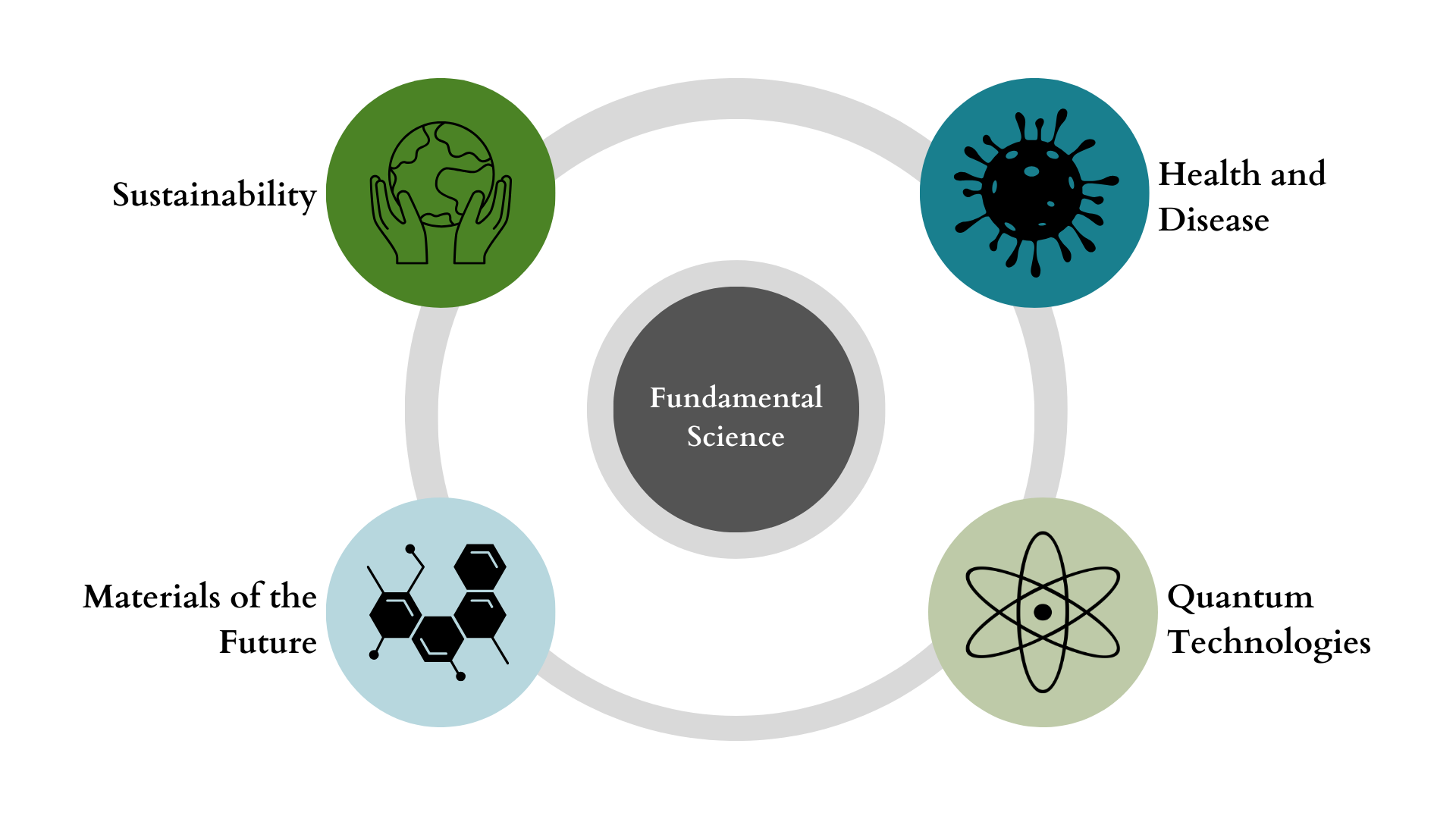Research Strategy 2023 – 2027
Overall Vision
With fundamental and outstanding research in chemistry being the core of all activities, we want to contribute to accelerating a “green transition” of society, solving environmental issues, finding tomorrow’s cures of diseases, developing materials of the future, and providing new approaches for realizing a quantum technology revolution.
Research Themes
In our research strategy, we have identified four specific themes that broadly span research within the six research sections of the department: Sustainability, Health & Disease, Quantum Technologies, and Materials of the Future. Research progresses within these themes will be fueled by an ambition to maintain a well-functioning state-of-the-art infrastructure and by a focus on fundamental science and method developments within all the classical disciplines of chemistry.

Sustainability
This theme encompasses research in environmental and atmospheric chemistry, air pollution sensing, biomass transformations and valorization, catalysis, power-to-X, CO2 fixation and conversion, water desalination, photovoltaics, energy storage and energy research in general.
Health & Disease
This theme spans broadly medicinal chemistry, drug development (including efficient screening methods), molecular biology, cell biology and studies of cellular responses, biochemistry and biophysics for applications in drug discovery, drug delivery and diagnostics, and health risk mitigations.
Quantum Technologies
The ambition is to become a significant player in the second quantum revolution, and the theme includes development of molecular spin-based qubits, development of quantum chemical or computational software, and the search for computational chemical problems for which “quantum advantage” could be achieved on future quantum computers.
Materials of the Future
We aim to “make materials by design”, that is, materials tailored to exhibit specific properties, for example for use in electrocatalysis, as magnetic or conducting materials, as materials for bioimaging, or as optical sensors. A common denominator for many theoretical and experimental projects is a focus on “interactions between light and matter.”
